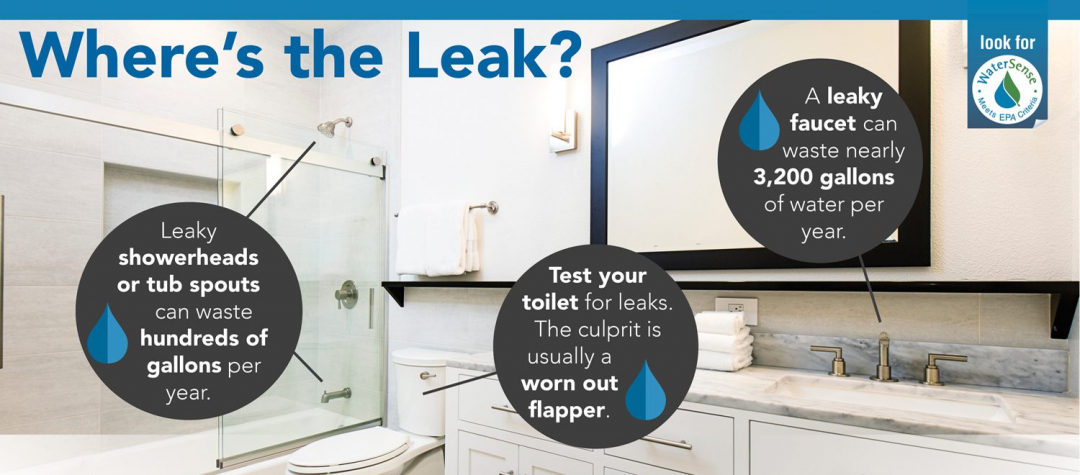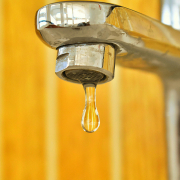Find and Fix Leaks During Fix-A-Leak Week 2025
The U.S. Environmental Protection Agency’s (EPA) annual “Fix A Leak Week” program focuses on the importance of repairing leaks and saving water in the workplace and other commercial buildings such as hospitals, schools, hotels, retail stores, and community centers, as well as in the home.
In 2025, Fix a Leak Week will take place March 17 – 23. It is supported by the San Diego County Water Authority and many of its 22 member agencies and by other regional WaterSense partners throughout North America.
Fix a Leak Week was created in 2009 by the EPA’s WaterSense program. It offers a reminder annually to check indoor and outdoor plumbing systems for leaks.
Southern Californians Leaders In Water Savings

Bathroom plumbing and fixtures are common sources of household leaks. Graphic: EPA
According to a recent report to the California legislature, Southern Californians have reduced their per-person potable water use by 45% since 1990, a decline driven by the region’s commitment to embracing a conservation ethic led by its residents who have adopted a conservation ethic.
Total per capita water use in the San Diego County Water Authority’s service area has dropped from over 220 gallons per capita per day (GPCD) to less than 120 GPCD in FY 2023. During this timeframe, potable water use fell by over 30 percent, even though the region’s population grew by about 17 percent.
Since 1991, the Water Authority’s water-use efficiency programs and initiatives have cumulatively conserved more than one million acre-feet of water. These savings were achieved through various measures, including incentives on water-efficient devices, legislative efforts, and outreach programs.
Leaks and continuously running water may not always be visible, but they can add up quickly and become a significant cost in water and energy bills.
A faucet leaking one drip per second can waste nearly 58 gallons per week, while a showerhead leaking ten drips per minute wastes about 10 gallons per week. Worn-out washers or loose connections are common culprits. Turn off the water, replace old washers, and tighten any loose fittings.
Be Alert For Leaks By Following These Tips
- Listen and look for unexpected water use indoors and outdoors, such as running water, unanticipated discharge to floor drains, or wet spots and puddling water on floors.
- Don’t wait for a high water bill to find problems. Read water meters during off-peak hours when water use is lower. If the meter continues to show high use, there may be a leak.
- During the colder months, check your water usage on your water bill. If a family of four exceeds 12,000 gallons per month, you may have a leak.
- Check your water meter after two hours when no water is being used. If the meter changes, you may have a leak. Contact your water agency immediately. If you aren’t sure how to read your meter, this video will help
- Place a few drops of food coloring in the toilet tank and wait 10 minutes without flushing. If color appears in the bowl, you have a leak.
- If your garden hose leaks during use, replace the nylon or rubber hose washer and use pipe tape and a wrench to ensure a tight connection to the spigot.
The EPA offers a helpful checklist to ensure you identify and find any possible sources of leaks.
Rebates and Incentives Water Authority customers who implement efficient water technologies and practices can take advantage of a range of rebates and incentive programs. These include rebates on irrigation devices, turf replacement, high-efficiency clothes washers, and toilets. These programs have helped hundreds of thousands of residential, commercial, and agricultural water users improve their water efficiency.
Audits and Surveys. Programs offering residential, commercial, and agricultural customers free, on-site water-use evaluations that identify specific measures to save water are great resources.
Learn about the residential, commercial, and agricultural programs and rebates available to help residents and businesses conserve water and save money.



